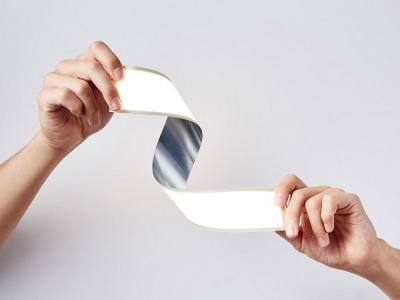Back in 2012 LG Chem started discussing a Gen-5 OLED lighting fab, but that plan did not materialize. In late 2015 LG Display acquired LG Chem's OLED lighting business and the plans for the Gen-5 fab re-emerged.

Today LG Display announced that it will go ahead with the plans and invest in a Gen-5 (1000x1200 mm) OLED lighting fab that will be located in Gumi, South Korea. The initial capacity will be 15,000 monthly substrates, and LG will increase capacity depending on market reception. Mass production in the new fab is expected by the first half of 2017.
LG currently produces OLED lighting panels in a Gen-2 fab (370x470 mm) that has a monthly capacity of 7,000 monthly substrates. The new fab will have a much higher capacity - and this will enable LG to dramatically lower their prices due to economies of scale. Back in 2012 LG estimated that the Gen-5 fab will cut production costs by 95%. LGD says that the new fab will also enable the company to enhance the light quality of its OLED panels.
 LG Chem OLED fab cost estimation (2012)
LG Chem OLED fab cost estimation (2012)
A larger substrate will also enable LG to produce larger panels. LG's current largest panel is a 320x320 panel (this is the largest OLED panel in production today). LG is also producing flexible OLEDs, and I hope the new fab will also be able to produce plastic-based flexible OLED lighting panels.
LGD says that the OLED lighting business plan is to first focus on task lighting and decorative lighting in high-end retail stores and in luxury hospitality. LG will later expand its OLED lighting reach to the general lighting market. Other important markets are the automotive lighting market and convergence applications such as OLED light panels merged with furniture, architectural materials, electronic devices and more.

This is a great commitment by LG Display and it may prove to be a watershed moment in the OLED lighting market. Because of small production volumes, OLED lighting is extremely expensive today. The only exception is (perhaps) Konica Minolta's R2R flexible OLED fab - but the company is still struggling with this fab and faces years of delays.
Hopefully LG's decision will kickstart this industry and will force other players, such as OLEDWorks or OSRAM to also start making plans for high volume OLED production.
In October 2015, LG Display announced that it has acquired LG Chem's OLED lighting business for $135 million USD. The deal was finalized towards the end of 2015. LG said that this will enable it to streamline its OLED business and today's decision seems to indicate that LG is on the right track. It was reported before that LGD may actually convert an existing production line to make OLED lighting, but this was not mentioned in today's announcement, and LG did not detail the investment required to build the new fab.
This OLED lighting fab investment follows several investment commitment recently announced by LGD towards OLED display production lines. In August 2015 LG Display announced plans to invest around $8.5 billion in OLED capacity in the next three years as the company shifts its focus to OLED displays. Later in November LGD announced that it will build a new OLED display plant in Paju, Korea. The P10 fab will mainly make large-size OLED TV panels and flexible OLED panels. The total investment in the P10 plant is estimated at KRW10 trillion ($8.7 billion USD).
In July 2015 LGD announced that it decided to build a new 6-Gen (1500x1850 mm) flexible OLED fab in a $900 million investment. The new E5 line will be located at LGD's Gumi Plant (close by to the OLED lighting fab, probably) and will have a capacity of 7,500 monthly substrates - or 1.5 million 5.5" panels. The new fab is scheduled to begin mass production in the first half of 2017. In January 2016 LGD announced plans to invest $380 million to convert an existing LCD Fab to OLED TV production.

